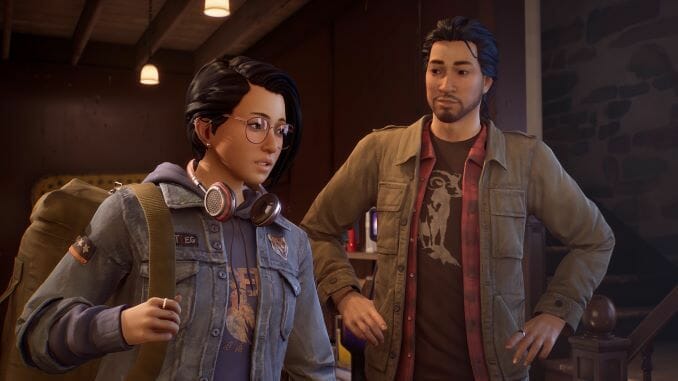Life Is Strange: True Colors Might Be Too Comfortable and Familiar

Life is Strange: True Colors is deeply familiar. You’re Alex Chen, the new girl in a town called Haven Springs, trying to leave some baggage behind while listening to a blandly tuneful indie soundtrack. She’s quiet but charismatic, likable but has trouble relating to others. Who among us hasn’t wanted to hop on a bus and skip town to somewhere where we could focus on anything and everything but ourselves? In this town you’ll make new friends, meet new enemies, find love, face new hardships, and grow into a new person. Your long-lost brother Gabe invites you to Haven Springs in hopes of kickstarting this new phase of your life, having looked for answers and found peace there himself a few years back. Before you can really grow well acquainted again, though, he’s taken from you in what appears to be an accident. All the way down to the tragic set up, True Colors is painting a picture with the same palette the series has always been known for.
Where Life is Strange tends to differentiate itself is in its use of the supernatural, even if the concept of it in this universe is tame now. Every game in the series has a character who exhibits a different supernatural ability that typifies how they relate to the world. In the first, Max could reverse time, using it often to save herself from awkward conversations or to take back actions she regrets. Her ability is rooted in self-preservation and Max stretches the lengths of reality by the end of that game to preserve herself and what she holds dearest. In Life is Strange 2, the player character’s younger brother, Daniel, develops telekinetic powers, which gives him the strength to carve out his own seat at the table. He wants to be strong not just for himself, but for the family he couldn’t protect. He grows brazen with power, but understanding how and when to deploy his strength is part of his journey. And finally we have Alex, who’s refreshingly a young adult and an empath. She can see auras around people and items that tell her how someone is feeling or felt, allowing her to recall the details and memories of the involved parties. Additionally, and quite dangerously for Alex, she can take the most overwhelming of these feelings and absorb them into herself, altering her emotional balance. Because of this, she’s grown weary of becoming close to people by the time the game begins, and we follow her as she begins to open back up, all the while helping the people of Haven Springs deal with their own baggage.
This empathic power is quintessential to Alex’s journey and the investigation into the death of her brother. Actually playing the game consists of the same loop you always do in Life is Strange: you walk around talking to people and use your powers and these conversations to make choices that impact the overall story. Much like the first game, where you would learn info, rewind and then use your newfound knowledge to drive conversations even further, your power and how it lets you talk circles around people will be the core of what you do here. Instead of rewinding time, you will instead read people’s feelings, and what that reveals will open up new dialogue choices. While it may go by another name in this game, the mechanic is mostly the same, if not simpler than ever, and leaves something to be desired. Some segments of previous installments had light puzzle-solving that pushed your abilities a bit further, but True Colors all but drops that save for perhaps a singular sequence, meaning there’s ultimately little friction keeping you from just experiencing the story.
Narratively is where Alex’s empathic abilities step closer to center stage. As you read the auras of those around you, you regularly help these people piece themselves together. In these moments, not only is True Colors some of the best writing in the series, but also features some of its best direction. Alex isn’t just able to feel what people feel, but sees visualizations of it too. The world around you sheds and comes to life in order to reveal the layers beneath countless characters’ facades. The way that their feelings of fear, joy, and, most strikingly, grief are illustrated in the world are grounded and strong. In a particular moment about halfway through the game, these visuals work in tandem with a competent score to absolutely sell the poignancy of a heart wrenching scene. The writing can be devastating, and the game benefits not only from drastically improved and more natural dialogue, but from better performances, too. Everyone’s voices feel tailored to their characters, and their words seem shaped by themselves rather than a tacky writing room. On the technical side, while the game is as aesthetically soft as ever, motion capture performances and improved facial models make the townspeople feel leagues better than previous installments, where I felt like I was playing with cheap plastic dolls.